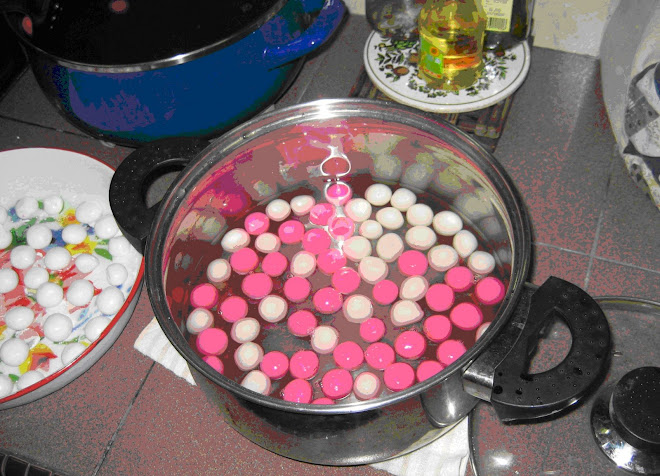
Okay, the man’s had about 30 years worth of food critiquing, interviewing for the Herald Sun and no doubt, much cooking and tinkling about in the kitchen in his own private time. So who better to write a book about the essential food items to try before you kick the milk bucket, so to speak. Not having read a lot of Downes’s reviews in the past, I got the feeling after I finished the book that this was a man with considerable wit, a loosely hanging acerbic tongue – not afraid to call a spade a spade; generous with his gastronomic knowledge and by the sounds of things, a mean jam maker and cook.
I also learnt that Downes was banned from eating at Jamie Oliver’s Fifteen restaurant, and from 8 other restaurants, back in 2006. Perhaps they were all pooing in their black and white chequered pants that he’d give them an unbalanced review?
The book is broken up into four distinct sections: Eating Out, Eating In, Worth the Effort and Perfect 10s. Self explanatory really. So want to know what Downes rates as his number one food experience? Downes is clearly a fan of Cheong Liew; the father of the famed ‘four dances of the sea’ signature creation. The ‘four dances of the sea’ comes in at 1 and 34 being Liew’s sea cucumber and sharks’ lips braised in carrot oil.
Those of you who read the Australian in July 2009 will remember John Lethlean’s scathing review of the Liew’s The Grange. I wonder what Downes thought of the review?
The disparity behind these two reviews four years apart can’t get any more disparate. Downes relives the joy of eating this dish:
“…four small islands of seafood on a bare white plate. They were arranged at the points of the compass, and eaten in the order in which I’ve listed them, which meant you ascended in strength of flavour. Each mouthful had meaning.’
Lethlean on the other hand, found no meaning or narrative behind the four dances: “There’s a story to the dish but it’s not told here and, without it, they are merely four seafood elements on a plate with no connection: cherry vinegar-pickled fish with avocado; squid ink noodle with raw calamari (a textural gem); grilled octopus with confit eggplant and harshly chillied aioli; and a prawn with yellow curry sauce heavy on peanut and kaffir, sitting on a glutinous rice patty. It is not the epiphany I’d hoped for. Nowhere near.” Oh dear.
I guess it’s important to note that years have elapsed since the writing of these two reviews, new concepts become old and experimental techniques that were once lauded are now commonplace in fine dining establishments.
Downes also weaves in a couple of his own political feelings on issues like political refugees and migration in Australia. Remember, he was writing in the era of John Howard and the Tampa fiasco was still fresh in the minds of many emphatic Australians. He writes of the migrant Cheong Liew and his impact on the Australian culinary landscape; and ends the article with this little political jibe/plea. “Especially politicians, who need to be continually reminded that two of Australia’s best chefs were refugees. And that our national dish is not pie ‘n’ sauce or steak and chips. We don’t need to cringe. We lead the world, but our leaders neither know nor care.”
Political seriousness aside, Downes does have a playful side to him, much of the reviews are witty and many will find his quirky touches a pleasurable read. You see Downes has a bit of a thing for wee. Yes, we’re talking piss. Steady on because it’s not that sort of pissing you’re thinking of. Fruit bat stew comes in at number 9 on his list of must eats.
“Bats hang upside-down most of the day and their toilet habits are, to say the least, lazy. I suppose it depends on the age of the bat, but, after a while, they inevitably begin to self-marinate. A light urinal whiff gets cooked into any stew made from them, matching, of course, the kind of delight Mr Leopold Bloom used to take in his breakfast kidney. (Joyce tells us in Ulysses that Mr Bloom loved ‘stuffed roast heart’ and ‘fried hencod’s roes’. But he especially delighted in his grilled breakfast kidneys of mutton, which gave to his palate, as Joyce put it, a ‘fine tang of faintly scented urine’.) Downes love of wee is strangely referenced in the number 12 must eat item: andouillette sausages at Chartier, France. Bear with me. He writes nostalgically: “Some of us – I was one – who fell in love early with the whiff of urine in food. Perhaps we were bed-wetters.”
The Eating Out chapters are no doubt the most entertaining read. The Eat In section may infuriate those who relish in exact measurements and quantities, cooking times and heat. Downes’s recipes are slapdash, happy-go-lucky, a pinch of this-n-that, a handful of salt, a glug of wine, prepare a hot oven, cook until you think it’s cooked type concoctions. I cook that way and I respond to that kind of instruction but others will probably want to throttle him over the sink for it. His selections are a combination of high-brow and comfort foods – with a tinge of cheekiness added for good measure. Love or hate his reviews, it's worth having a flick through. This is the sort of book you take on a plane en-route somewhere special (preferably with good food), or take with you to bed, tucked up, snug under the doona covers with a hot mug of cocoa, or a tumbler of gin.
This book won the 2005 Gourmand World Cookbook Award for Best Food Literature Book and I can kind of see why.

No comments:
Post a Comment